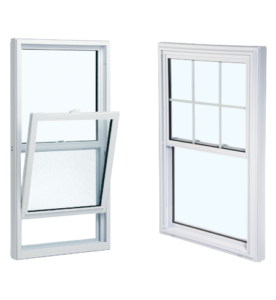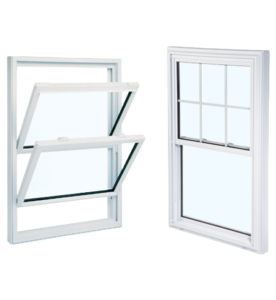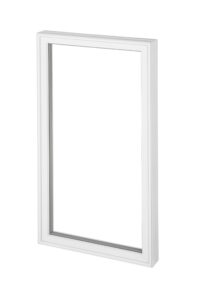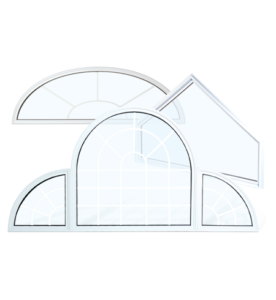
256 Lombard St., Smiths Falls, ON K7A 0B5

admin@smwindowsanddoors.ca

256 Lombard St., Smiths Falls, ON K7A 0B5

admin@smwindowsanddoors.ca
High-Performance Windows & Doors – Professionally Installed!
Energy-efficient, clean craftsmanship, no shortcuts
New windows can make your home quieter and less drafty—in short, more comfortable. And many new double-hung windows are easier to clean and maintain than their older counterparts fitted with combination screens and storms. On top of all this, new windows also can enhance your home’s curb appeal.
Installing replacement windows is a common way for homeowners to achieve those benefits. Typical replacement windows (sometimes called “pocket” windows) fit inside the existing window frame, minimizing installation costs. But many replacement window lines are also available as new-construction windows that require the removal of the entire old window, including the frame, sill, and trim. As a result, these usually cost more to install than the pocket type.
Click here to download the North Star Windows Brochure

Casement windows are characterized by being hinged on the side (or sometimes the top/bottom) and opening outward, like a door, to provide maximum ventilation and unobstructed views, unlike sliding windows.
How they open: Casement windows swing open on hinges located on one side (or the top in the case of awning windows) and typically open outward.
Design: They are attached to the window frame and feature a sash that opens and closes on hinges.
Benefits: They offer excellent ventilation, unobstructed views, and can be energy-efficient with proper sealing.
Variations:
Single Casement: A single casement window within a single frame, featuring one or more panels of glass.
Double Casement (or French Casement): Two casements within a frame, sometimes resembling French doors, potentially with a fixed casement in between.
Other names: They are sometimes called crank windows because they are opened with a crank handle. Top-hinged variations: Windows hinged at the top are sometimes called awning windows. Fixed casements: Some casements are fixed and do not open.

A single-hung window, also known as a single-sash window, is a type of window with a lower, operable sash and an upper, fixed sash. This means that the bottom part of the window slides up and down, while the top part remains stationary. Single-hung windows provide ventilation through the bottom sash.
Design:
Function:
Advantages:
Applications:
Suitable for rooms where ventilation is not a primary concern or where space is limited.
Popular for replacement windows and new construction.

A double-hung window, also commonly referred to as a double-sash window, is a type of window that has two operable sashes that slide up and down. There are two main operable parts of a double-hung window — the top sash and the bottom sash. They are both able to open to provide ventilation.
Operable Sashes: Both the upper and lower sashes can slide up and down independently, allowing for versatile ventilation from the top, bottom, or both.
Ventilation: Double-hung windows offer enhanced ventilation by allowing fresh air in through the bottom sash and warm air to escape through the top sash.
Cleaning: Many double-hung windows are designed with a tilt-in feature, making it easier to clean both the inside and outside of the glass from inside the house.
Design: Double hung windows are simple, traditional rectangular windows with two sashes, one upper and one lower.
Maintenance: The ability to slide and tilt the sashes facilitates cleaning and maintenance, especially for windows on upper floors.

Awning windows are hinged at the top and open outward from the bottom, creating a canopy-like effect for ventilation and weather protection.
Hinged at the Top: The window sash is hinged along the top edge of the frame.
Opens Outward: The window opens outward from the bottom, creating a 45-degree angle.
Ventilation: Awning windows are designed to provide excellent ventilation, allowing fresh air to enter and stale air to escape.
Weather Protection: The outward opening design helps to protect the home from rain and other weather conditions.
Energy Efficiency: The tight seal created by the overlapping sashes can improve energy efficiency.
Ideal Locations: They are often used in kitchens, bathrooms, or basements, or in areas where ventilation is important.
Operation: Some awning windows are opened and closed with a handle, while others use a crank mechanism.

Fixed windows, also known as non-operable or picture windows, are stationary windows that do not open or close, designed to provide expansive views and natural light. They are sealed into the frame and offer benefits like enhanced energy efficiency and ease of cleaning.
Non-operable: They are designed to remain stationary, unlike traditional windows that can be opened and closed.
Uninterrupted Views: Fixed windows are often used to maximize views and bring in as much natural light as possible.
Versatile Design: Fixed windows can be customized in size and shape, including curved, arched, or rectangular designs.
Energy Efficiency: Because they don’t have moving parts or gaps, fixed windows can contribute to better energy efficiency.
Ease of Cleaning: Fixed windows are easy to clean as they do not have moving parts or complex mechanisms.
Benefits of Fixed Windows:
Where are they Commonly Used:
Over an operable window: Fixed windows can be combined with operable windows to create a more versatile window system.
Homes: Fixed windows are popular in homes, particularly in areas where ventilation is not a primary concern, such as walls with large expanses of glass or on roofs.
Commercial buildings
Over an operable window: Fixed windows can be combined with operable windows to create a more versatile window system.

A bay window is a protruding window structure extending outward from a building’s wall, creating a small alcove or seating area inside and allowing for expansive views and increased natural light.
Protrusion: They extend beyond the exterior wall, creating a bay or recess inside the room.
Windows: Typically composed of three or more windows, often with a central fixed window (a “picture window”) and angled operable windows on either side.
Purpose: Designed to maximize natural light, enhance views, and add architectural interest.
Space: Create an alcove or nook that can be used for seating, displaying items, or simply enjoying the view.
Variations: While commonly rectangular or polygonal, they can also be curved, sometimes referred to as “bow” windows.
Also called: Oriel window if projects from an upper story and supported by corbels

Shaped windows, a departure from standard rectangular shapes, offer unique architectural accents and increased curb appeal, often fixed for energy efficiency and minimal maintenance. They come in various forms, including round, arched, triangular, and more, enhancing the design and character of a home.
Design Flexibility: Shaped windows provide limitless possibilities for architectural design, allowing homeowners to customize their homes and add a unique touch.
Curb Appeal: They enhance a home’s aesthetics, creating a statement piece and making a property stand out.
Fixed Placement: Because most shaped windows are designed to be fixed, they offer excellent airtight and waterproof features, enhancing energy efficiency.
Maintenance: Since shaped windows are fixed, they have fewer moving parts, leading to easier maintenance
Natural Light: Shaped windows, especially larger ones, provide exceptional views and allow ample natural light into the home.
Variety of Shapes: Shaped windows come in a wide range of shapes, including but not limited to:
Materials:Shaped windows are typically made from durable materials like uPVC, uPVC and aluminum (hybrid), or fiberglass.
Customization:They are often custom-made to fit specific spaces and architectural designs, offering a tailored fit and aesthetic.